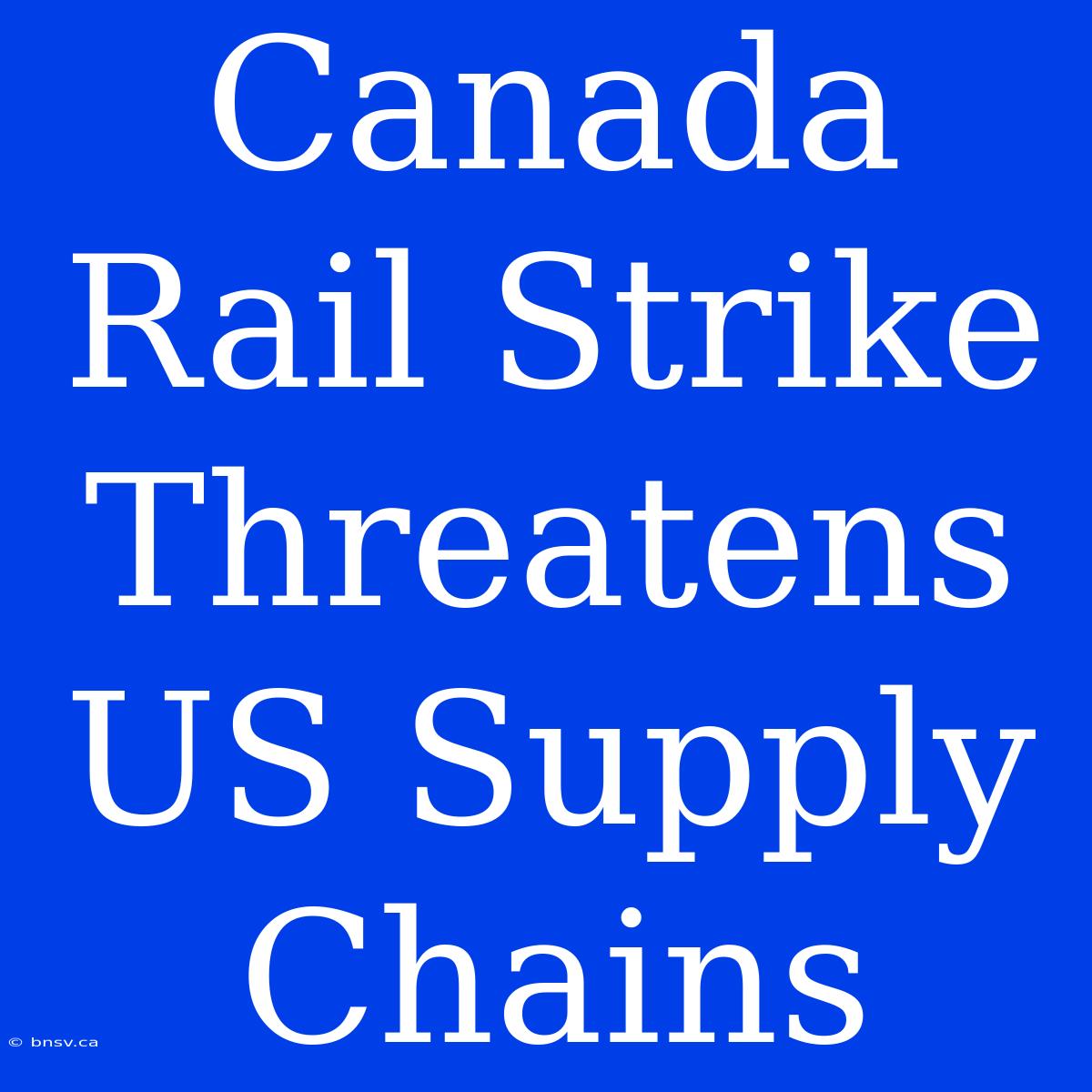Canada Rail Strike Threatens US Supply Chains: A Looming Crisis for Businesses?
Editor's Note: The threat of a Canada rail strike looms large, impacting not only Canadian businesses but also US supply chains. This article explores the potential repercussions of such a strike, focusing on its impact on US industries and the broader economy.
Analysis: The potential for a Canada rail strike has sparked concern among businesses and policymakers alike. This article analyzes the intricate web of interconnected supply chains that rely heavily on Canadian rail services, and its potential disruption by a labor dispute. It examines the various industries affected and explores possible solutions to minimize disruption.
The Interwoven Nature of North American Supply Chains:
- Imports and Exports: Canadian railways handle vast volumes of goods destined for US markets and vice versa, playing a crucial role in international trade.
- Manufacturing: Industries heavily reliant on raw materials and components transported by rail will face significant challenges if the strike disrupts supply chains.
- Agriculture: Canadian agriculture exports rely heavily on rail transportation, potentially impacting food prices and supply in the US.
Key Aspects of the Potential Impact:
1. Supply Chain Disruptions:
- Delays and Backlogs: A prolonged strike could cause significant delays in shipments, leading to backlogs and stock shortages for US businesses.
- Production Halts: Manufacturers reliant on imported components may be forced to halt production, impacting overall output and economic activity.
- Increased Shipping Costs: Alternative modes of transport, like trucking, could become more expensive, increasing costs for businesses and consumers.
2. Economic Impact:
- Lost Productivity and Revenue: The strike will likely lead to reduced productivity for businesses reliant on rail services, resulting in lost revenue and potential layoffs.
- Inflationary Pressure: Disruptions to supply chains can contribute to inflationary pressures, particularly for essential goods and services.
- Consumer Discontent: Product shortages and higher prices can lead to consumer discontent and potentially impact overall economic confidence.
3. Solutions and Mitigation Strategies:
- Negotiated Settlement: The most effective solution is a swift and amicable negotiation between unions and rail companies to avert a strike.
- Government Intervention: Governments on both sides of the border may play a role in mediating negotiations or implementing temporary solutions to minimize the impact on supply chains.
- Alternative Transportation Modes: Exploring alternative transportation modes like trucking, shipping, or air freight could provide temporary relief, but often at a higher cost.
FAQ:
- Q: What is the likelihood of a strike? A: While negotiations are ongoing, the likelihood of a strike remains uncertain.
- Q: How will the strike impact specific industries in the US? **A: ** The impact will vary depending on an industry's reliance on rail transportation for imports, exports, or raw materials.
- Q: What steps can businesses take to prepare for a potential strike? A: Businesses should assess their supply chain vulnerability, explore alternative transportation options, and consider stockpiling critical components.
Tips for Businesses:
- Monitor the situation closely: Stay informed about the negotiations and potential strike dates.
- Evaluate your supply chain: Assess your reliance on Canadian rail services and potential vulnerabilities.
- Explore alternative transportation options: Identify and evaluate alternative modes of transport.
- Increase inventory levels: Consider stockpiling critical components to minimize disruption.
- Communicate with customers and suppliers: Inform your stakeholders about potential delays or disruptions.
Summary: The threat of a Canada rail strike presents a significant challenge to North American supply chains. The potential impact on US businesses could be severe, leading to disruptions, increased costs, and economic uncertainty. Effective negotiations and timely solutions are crucial to minimize the negative impact of this potential labor dispute.
Closing Message: This situation highlights the interconnected nature of global supply chains and the need for proactive measures to mitigate potential disruptions. As businesses and governments navigate this complex issue, collaboration and strategic planning will be essential to ensure the smooth flow of goods and services across borders.

